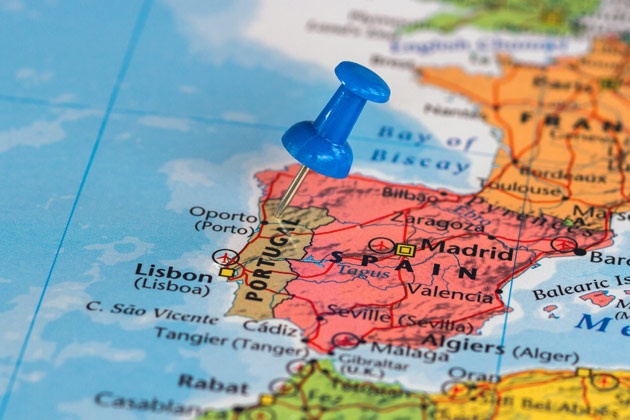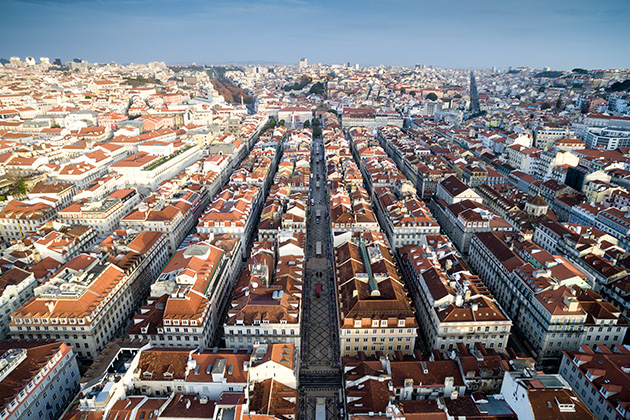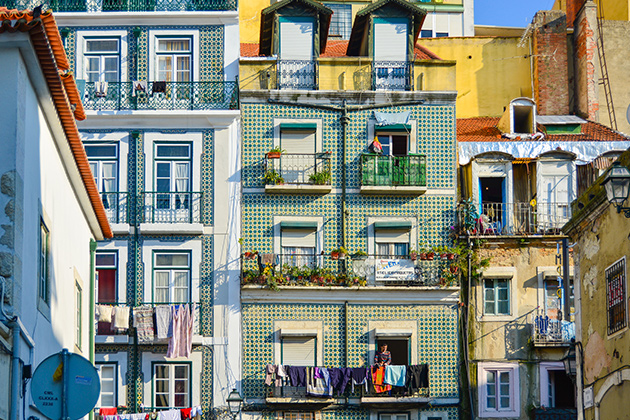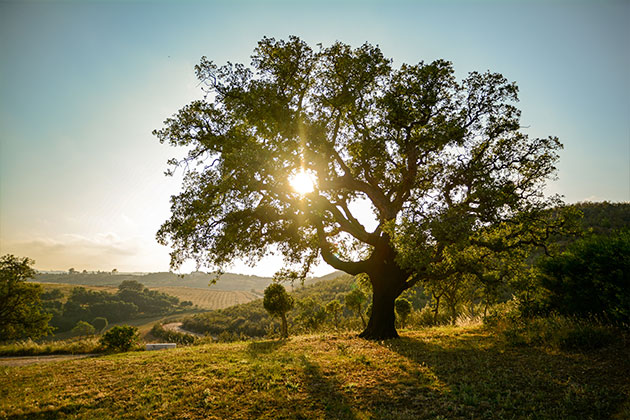
Portugal enjoys mild weather, making it a paradise in terms of climate. The seasons are clearly distinguishable during the year, and there are obvious geographical variations between the north, center, south and the coast. In this article we will give you a brief description of the climate in Portugal.
Mainland Portugal is considered a mild country and in 2019 the average annual minimum temperature was 10 degrees centigrade, with an average annual high of 21 degrees, according to the Portuguese Institute for the Sea and Atmosphere (IPMA), as the weather bureau is known. Overall, autumn and winter tend to be windy, rainy and colder, with lower temperatures in the north and interior. Down south temperatures are more pleasant, although sometimes a little excessive in the summer, with the interior of the Alentejo, and other parts of the country, reaching 40 degrees.
Climate in Portugal: air masses that influence
Located in the southwest of Europe, in the temperate zone of the northern hemisphere, Portugal’s climate is affected by four air masses. These are the polar sea air mass, that is cold and humid; the continental polar air mass, that is cold and dry; the continental tropical air mass, that is warm and dry; and the tropical sea air mass, that is warm and humid.
Factors such as latitude, altitude and closeness to the sea, as well as the distance from the same and the relief along the coastline lead to some climatic diversity, but overall it can be considered temperate and Mediterranean, although there are four climate clusters that can be considered.
Climate in Portugal: the four air masses
Northern coast: Mediterranean climate with a maritime influence
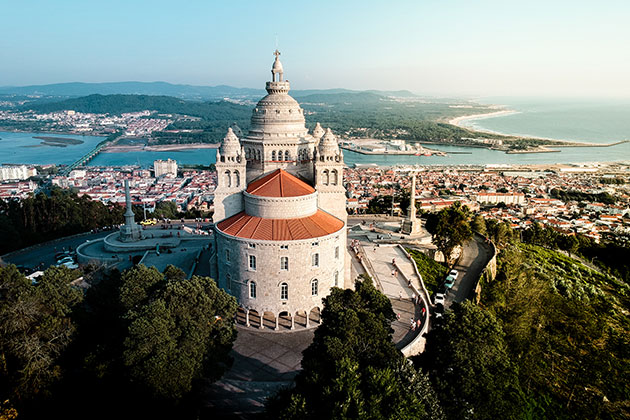
Characterised by low annual temperature variations, warm summers and mild winters, but high humidity levels during most of the months and high levels of rain most of the year.
North interior: also Mediterranean climate, but with a continental influence
This is where you will find the biggest annual temperature variations in the country, with harsh winters and low rainfall during the year, and some snow. In the summer the climate becomes hot and dry.
Mountain regions: altitude climate
Cool and humid summers, harsh winters and high levels of rainfall during the year, in the form of snow during the colder months.
South: clearly Mediterranean
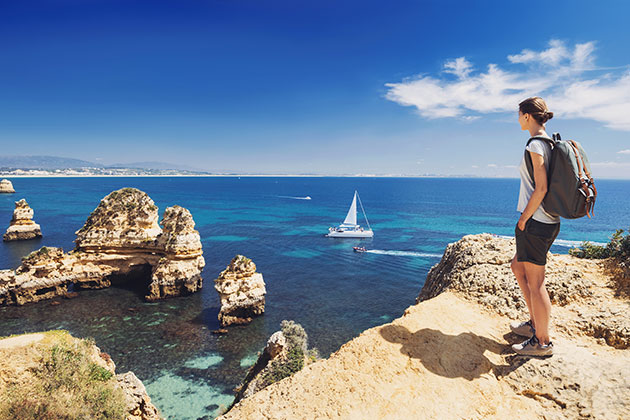
Here the summers are longer and hotter, with at least five or six dry months. In the south the winter is mild and quite dry, with lower rainfall than in the rest of the country.
Climate in Portugal: how about the islands?
Azores archipelago: Oceanic
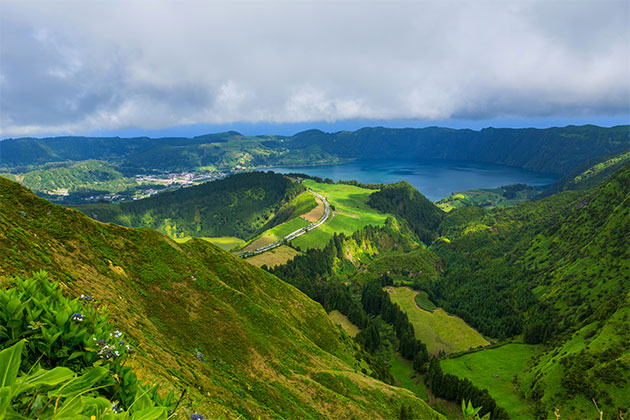
In this marvelous archipelago the climate is oceanic, with smooth and wet winters, abundant rain, constant humidity and low annual temperature variations.
Madeira and Porto Santo: Mediterranean

In the Madeira islands the climate is once more Mediterranean, with higher temperatures over the year. Thanks to its mountainous relief, it is also subject to frequent rain, cooler and wetter in the northern exposures and less humid and warmer in the south. The Selvagens islands, on the other hand, have a desert climate, with an average of only 150mm of rainfall per year.
Climate in Portugal: when to visit?
Having described the weather in Portugal, we can recommend some regions and cities that are better to visit in each of the four seasons, so that you can make the most of your experience in discovering the country.
Spring
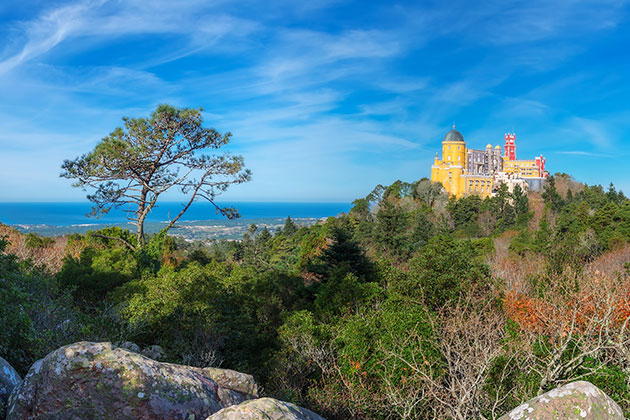
A visit to the Sintra hills, also known as the Moon Hill. This is part of the Sintra-Cascais Natural Park, and is known for its lavish vegetation. With a little luck, you might spot foxes, genets or peregrin falcons, among others, while losing yourself in the rich, unique green scenery. Don’t miss out on a visit to the Moorish Castle, the Pena Palace, the Capuchin monastery or the Quinta da Regaleira, which are all on the same side of the hill.
Summer
Drive down to the Deserted Comporta Beaches. You’ll find five trails to hike along the creeping vegetations of the dunes and that lead to the marvelous stretch of sand that connects Troia to Sines. Overlooking the tranquil ocean, the beach is generally deserted, even during the holidays, making it an ideal destination for a seaside summer with the family. You will need to bring your own food and beverages, since there are no bars or restaurants in the vicinity.
Autumn

A visit to Nazaré, which takes its name from the tradition of Our Lady of Nazareth. This is a very traditional fishing village which used to be one of Portugal’s main points of interest for international tourism. Enjoy the wonderful beaches and local traditions, including the seven layered dresses the women used to wear as they awaited the arrival of their husbands, who had gone into the perilous seas to fish. The seven layers were used to cover the women fully (head, shoulders and legs) and to protect them from the humidity that rolled over from the ocean. You should also visit the famous Praia do Norte, where waves sometimes reach 30 meters during this season.
Winter
A visit to Ponte de Lima, which is made even more charming on very cold but sunny days. This is one of Portugal’s oldest towns. Don’t forget to bring your camera and walk along the medieval bridge, visit the churches, parks and shrines that line the historic center.
